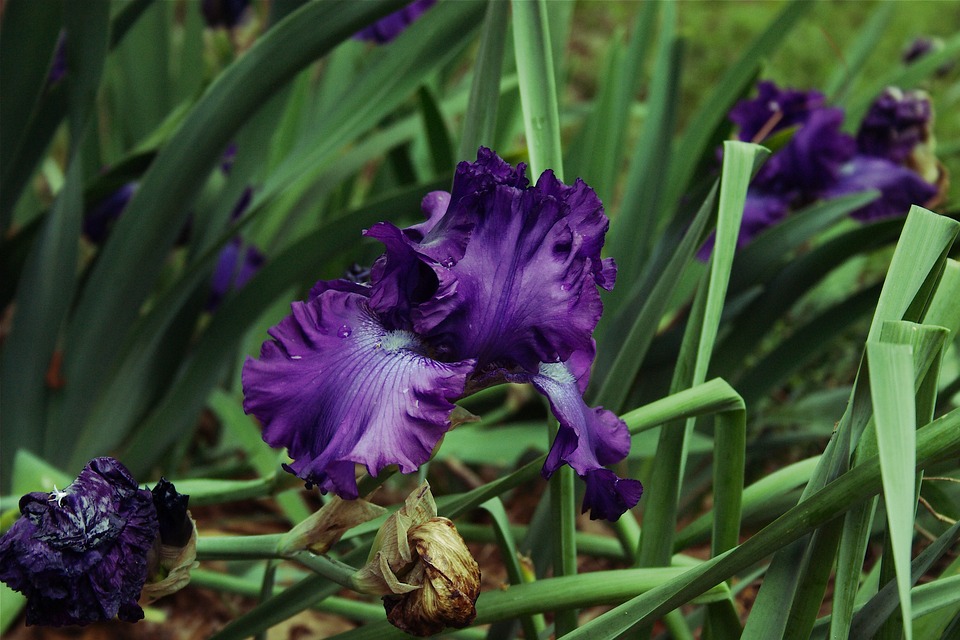
Dig & Divide! Spring Blooming Poppies, Bleeding Hearts, and Bearded Iris
Bearded Iris
****Sunny spots are great places to begin when searching for the perfect spot for the bearded iris. Pick a spot with full sun for the transplant of the bearded iris. Start by carefully digging up the stems and rhizomes of the plant. Cut the main rhizome into smaller pieces ensuring that each piece has a leaf fan. Trim down the leaves to about 6 inches. After cutting the rhizome, wait for a few hours so the cuts can heal. Dig holes just deep enough to plant the rhizome pieces into, and cover with only a ½ inch of soil. When planting, make sure to give an adequate spacing of about a foot in between each transplant.
Bleeding Hearts
To prepare for dividing bleeding hearts, water the plants thoroughly a few days preceding the transplant. When ready to start the division, dig holes for each plant about 6-8 inches deep. Cut extra foliage off the plant until stems are about 6 inches long. Cutting any shorter may damage the plant. Next, starting about 4 inches away from the plant, start digging a circle around the plant. The diameter of the circle should be around 10 inches. Dig deep beneath the roots of the plant and lift out. Take the parent plant’s stem and divide into clumps 4 inches in diameter. One of these plants will probably yield 3 new plants but could possibly produce as many as 6. Place the new plants into the holes and fill with soil. Water thoroughly over the next few days.
Spring Blooming Poppies
Begin the transplant of poppies by taking a spade and digging around the plant starting 6 inches from the base, in a circle like with the bleeding hearts. Gently pull up the clump from underneath the root system, and begin to separate into smaller clumps using hands or a shovel. Make sure the smaller clumps are about 6-8 inches in diameter to ensure a healthy root system. Examine the clumps to make sure there are no dead spots. If there are, simply discard them. Dig holes for each clump to the same depth that the poppies were originally located. Place clumps into the holes, fill with soil, and water about 1 inch every week until they bud again.
While the process of dividing and transplanting is easy, following the steps above will help to ensure a smooth transition. Make sure to water plants thoroughly a few days before digging. This will help the plants retain and store enough nutrients and will moisten the soil to make digging out the clumps easier. Dig on a cool day with cloud cover and preferably when the following days are forecasted for a few consecutive days of rain. This will ensure that the plants receive plenty of water and are able to take root nicely. Happy digging!